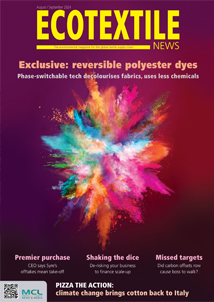Multiple design considerations
Even so, the customer will continue to place a premium on garment desirability. As Gustaffson says: “Functionality is an important part of our design DNA, but the overall aesthetic of each piece comes first.”
Modularity also lends itself to servicing the product. That’s because modular design closely relates to the principle of design for disassembly — an approach that enables products to be easily taken apart for recycling, remodelling or repair.
Fairphone put that principle into practice with its sustainable smartphones. The Dutch social enterprise launched a modular phone in 2013 that allows DIY repairs of not just the battery but also complex components like the camera, display screen and back cover.
Although tech experts say that, by prioritising modularity, Fairphone has managed to attract only a niche group of customers as the product isn’t as sleek as those from market leaders Apple and Samsung.
Switching back to fashion, if a brand cracks a design that looks beautiful, is multi-functional and repairable, the lack of product innovation will likely serve as the biggest roadblock.
Rowen explains: “I don’t think that modular innovation has arrived yet for fashion. When it comes to the basic principle of putting two materials together and then being able to successfully separate them without damaging the material, nothing has really revolutionised the industry beyond the zip.”
On a more optimistic note, Lynda Grose, chair of fashion design at California College of the Arts, argues that “the zip revolutionised fastenings in clothing in its time”.
“Innovation is a constant in human activity. Modularity is in the early stages of experimentation and it’s only natural that initial ideas will feel cumbersome. Ideas will be critiqued, refined and further developed, and will eventually be culturally accepted,” she said.
Also, in 2021, innovation cannot be divorced from the framework of sustainable materials. Modular fashion isn’t really circular in the absence of sustainable fasteners. Most of the so-called eco-friendly versions contain recycled content.
Grose adds: “The infrastructure for circularity does not yet exist, so focusing on a recyclable zipper or product does little to address the issue of waste. Mono material zippers that match garment materials are available and can theoretically be closed loop recycled. But they are synthetics and as we know, nature does not cycle synthetics.
“This is an opportunity for innovation for young designers. Leaning into the challenge or ‘staying with the trouble’, is key. Halting new material extraction and slowing the flow of that material through the fashion system is critical to the fashion industry functioning within earth’s finite limits. Modularity is one of many ways that business owners, designers and wearers can help achieve this goal. College level experiments rapidly prototype ideas at low cost and low risk.”
Business model innovation
Modular products could also trigger business model innovation by extending the brand-customer relationship beyond the initial sale. When such garments, or shoes, need repairing or altering, the brand would be able to offer ‘spare parts’ instead of prompting the consumer to buy a new item.
Nike took this approach with the limited release of a trainer, called Zvezdochka, in 2004 and 2014. It was made of four interchangeable parts so that a worn part could be replaced rather than the whole shoe.
Amlani says: “There is a market for replacement parts such as handbag straps or chains and sleeves for a convertible jacket/vest combo but production should be limited to made to measure and not kept in stock.
“Think of the extra buttons in your blazers. About 90 per cent of them don’t get used and it’s a waste of time, money, and materials.”
However, she adds that, as the need increases, retailers could start to hold minimal inventory of such items.
Ryan Mario Yasin, founder and CEO of Petit Pli, wants to launch a leasing model for his line of children’s clothing which he feels could make it more appealing to consumers.
His expandable trousers will continue to fit a nine-month-old baby for the next four years, but he’s found that parents are reluctant to shell out £60 for them, accustomed as they are to paying less than £10 for high street brands.
“We want to lower the resistance to change where people pay a much smaller monthly amount over the period of say three years than a higher amount up front,” says Yasin. “At the end of three years, if they return it, we can repurpose it into a new product.”
As regards other circular business models, a modular product could follow the regular path and be resold or rented. However, a more evolved version might involve renting modular components to mix and match wardrobe options. Likewise, a component that is no longer needed or desired could be resold or swapped.
If modular fashion does take off with the customer, expect to see more brands and retailers throw their hats into the ring and ‘modular design’ added to the list of sustainability filters on online platforms.
But, as ever, if fast fashion swoops in to appropriate this trend, the original intention behind this design principle could be abused. Cheap T-shirts and hoodies with detachable face masks have been spotted online during the pandemic.































































































